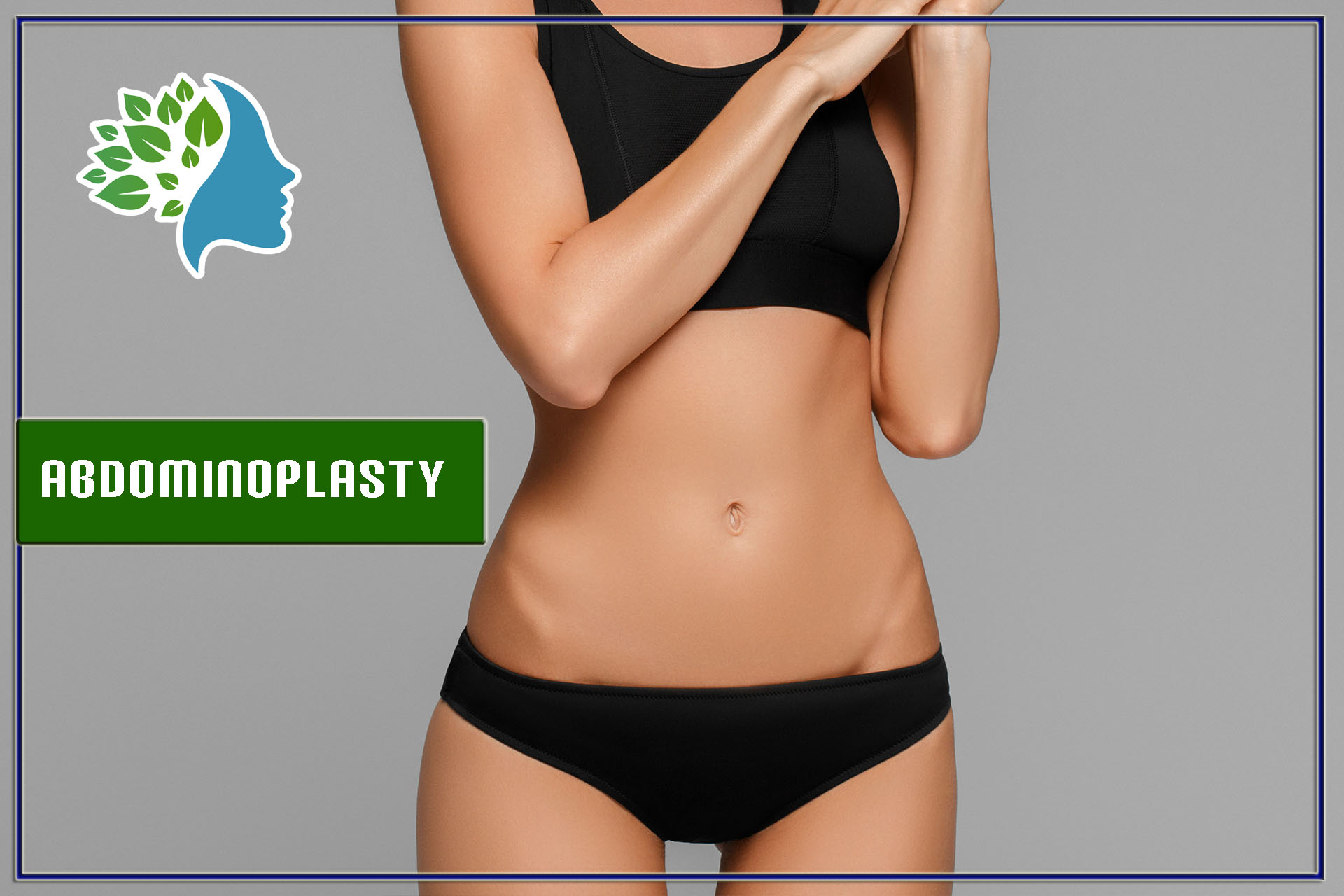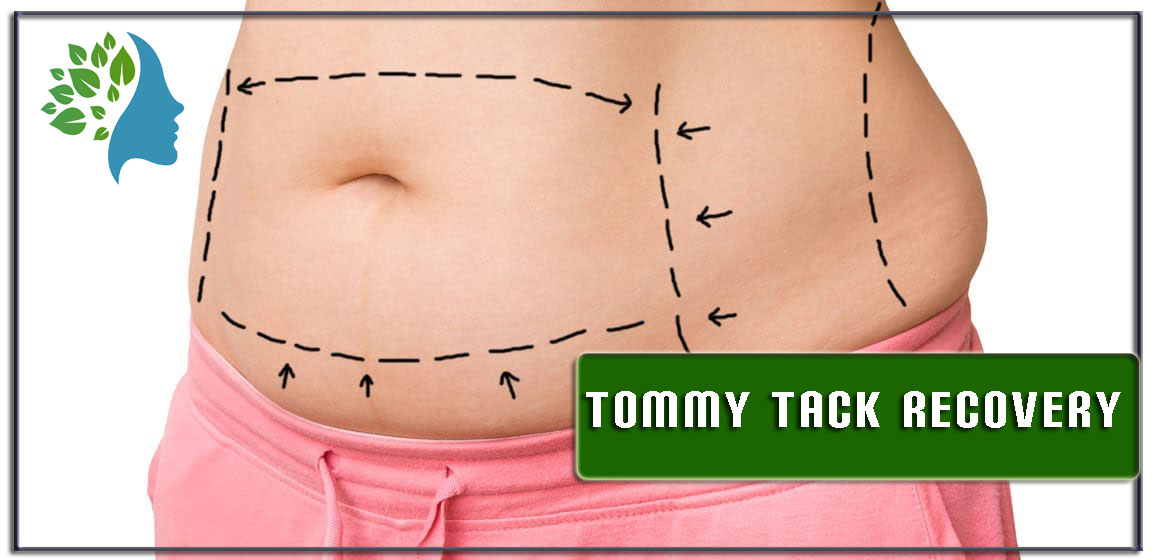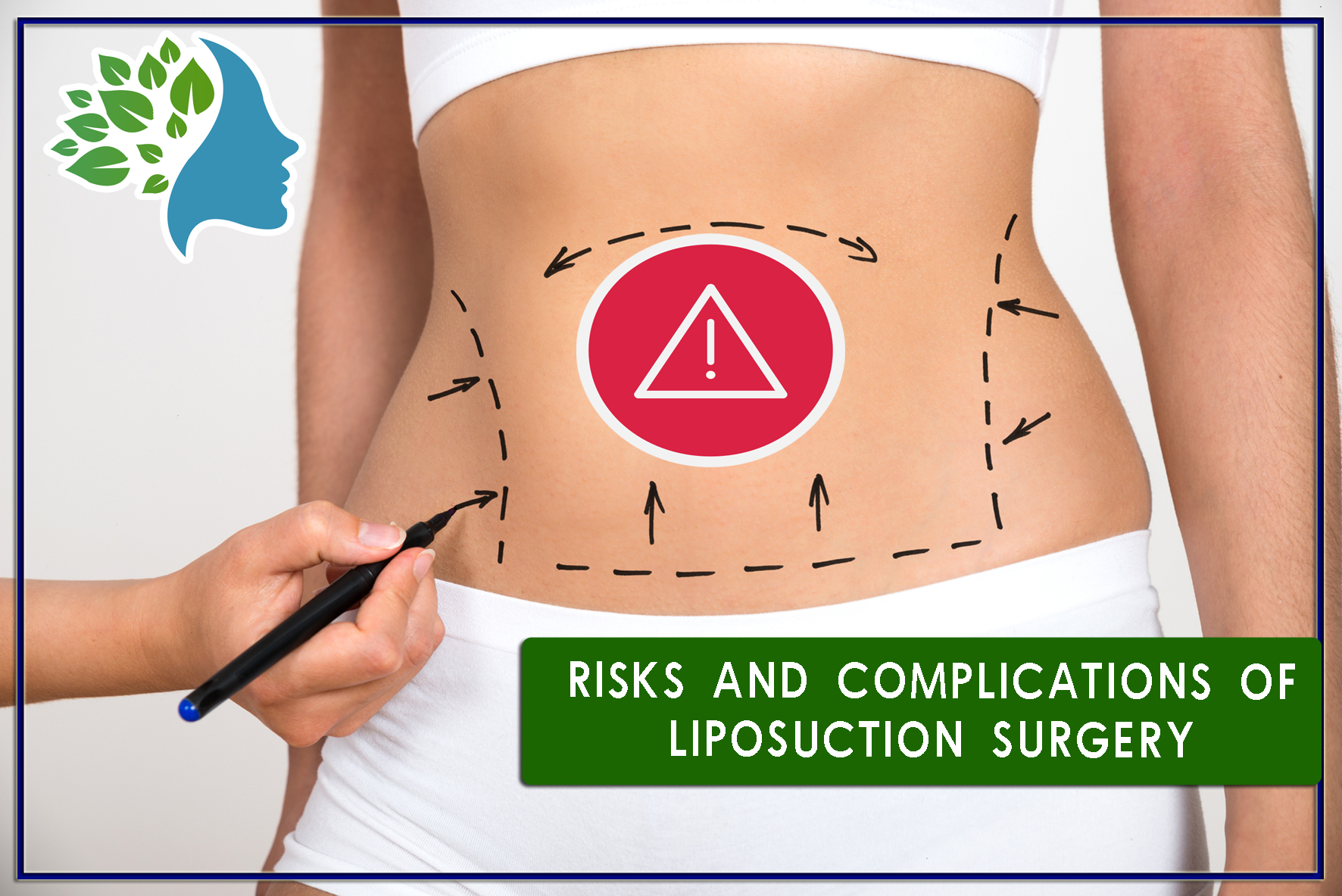Abdominoplasty (tummy tuck) and lipoabdominoplasty
What are abdominoplasty and lipabdominoplasty?
Abdominoplasty ( tummy tuck) or its alternative methods such as lipoabdominoplasty are very good options for abdominal cosmetic surgery , which by removing excess fat and skin and tightening the muscles of the abdominal wall, flattens the back and creates a dimple in the waist and adds beauty and fitness to your body. they return Now you get rid of excess skin and you can feel young and fresh by looking at your body in the mirror and enjoy wearing the clothes you like.
Abdominoplasty operation
What are the cases of abdominoplasty surgery ?
1- Women who after one or more deliveries have skin laxity, fat accumulation and decreased muscle tone and skin cracks on the abdomen.
2-People who suffer from sagging skin and loose muscles of the abdominal wall due to severe weight loss.
3- People who are morbidly obese and have undergone bariatric surgery (such as gastric banding or laparoscopic gastric bypass) and have experienced severe weight loss and skin sagging and laxity all over the body, including the abdomen and sides. are
Cosmetic surgeries for fitness
Abdominoplasty , breast prosthesis , fat injection , and body contouring are among the cosmetic surgeries that are performed for better physical fitness. Abdominoplasty is one of the cosmetic surgeries. In this article, the abdominoplasty operation will be fully explained to you dear ones. By reading this article, you can fully understand the advantages, disadvantages, pre- and post-operative care, how to perform abdominoplasty.
How is lipabdominoplasty performed?
This procedure is a combination of liposuction and abdominoplasty performed in one session. In lipabdominoplasty , liposuction of the entire abdomen is performed first. This work loosens the skin, then a skin incision is made like an abdominoplasty , but the release of the flap is not done completely and is done up to the navel and around it.
Then the release of the flap above the umbilicus is done in the form of a limited opening of the tunnel with a width of about 4 cm to the lower part of the sternum, as a result, most of the blood vessels, lymphatics and nerves are preserved, about 80% of the blood supply to the abdominal wall is through the vessels. Bleeding is done, most of them are preserved in this method. If necessary, the abdominal muscles are stitched (pleated) in the middle line above and below the navel.
As a result of liposuction , the skin flap becomes very flexible and the excess skin is removed and the skin is sewn, and finally the location of the navel is determined and after making an incision on it, the navel is taken out and its reconstruction is done.
Mini abdominoplasty
Ideal patients for mini abdominoplasty are usually younger and are between 25 and 50 years old.
In these people, fat accumulation is low to moderate and soft tissue laxity and stretch marks are limited to the lower part of the abdomen (below the navel). To better shape the appearance of the abdomen in this method, muscle pleating and liposuction can be performed at the same time.
In this method, the navel is usually preserved and its displacement is not performed (the incision around the navel is not made) or the connection of the navel to the abdominal wall may be cut and after pleating the muscles, if necessary, the navel is placed back in its original place or slightly lower. (max. 2 cm) is sewn to the abdominal wall again without cutting the skin.
After abdominoplasty
The first days after surgery are difficult for many. After the operation, the patient is transferred to the ward and placed in a semi-recumbent position and the legs are raised upwards. This is necessary to minimize skin tension in the abdomen. When the patient finally recovers from anesthesia, they may experience nausea and dizziness, which subsides within a few hours. On the second day after the operation, the patient can stand, but walking is allowed only in a half-bent position. Also, on this day, the first dressing is done. After abdominoplasty, the abdomen is tight and uncomfortable when pressed, because the procedure affects the muscle tissue, which needs time to heal. There is no severe pain after all, high-tech drugs can minimize any discomfort after surgery. Therefore, the doctor may prescribe a course of antibiotics or painkillers.
What are the advantages of lipabdominoplasty?
Lipoabdominoplasty is an effective way to remove fat that helps you achieve your desired figure. Lipabdominoplasty has advantages and disadvantages, here we describe the advantages of the lipabdominoplasty method in full and detail:
1- Less bleeding
2- Due to liposuction , the shape of the abdomen improves and the profile of the patient is more natural.
3- Most of the important feeding arteries, lymphatics and nerves of the abdominal wall are preserved.
4- The sensation of the upper part of the pubic area and the lower part of the abdomen is better preserved and the pain after the operation is less.
5- The rate of postoperative complications (hematoma, seroma, necrosis and wound opening) is less in this method.
6- The course of recovery after the operation is fast and the discharge of the patient is done earlier.
7- The size of the cut in this method is shorter and the possibility of adding skin in the corners of the cut (dog ears) in this method is very low.
8- The safety level of this method (compared to the classic method) is higher for smokers.
Is abdominoplasty surgery for women?
No, this operation can be performed on men as well, with the increase in abdominal cosmetic surgeries, the number of men who are candidates for this operation is increasing. Men and women care about their fitness nowadays and abdominoplasty surgery has gained many fans. There are various methods to flatten the stomach, among these methods, exercise and abdominal surgery are the most popular methods to get rid of belly fat. This issue is important for both women and men. Among this number of women and men, many people choose the abdominoplasty method to remove excess fat and skin.
Are abdominoplasty or lipoabdominoplasty a way to lose weight?
No, none of these surgical methods are considered as weight loss methods, and before performing these surgeries, the person must have achieved the maximum weight loss through following a diet and exercising, and must not have changed weight for at least 6 months. . Abdominal surgery is performed to remove excess abdominal fat and skin, and the best candidates for these surgeries are people who are uncomfortable with loose abdominal skin.
What conditions should a candidate for abdominoplasty have?
1- The person's weight should be close to the ideal weight (up to 30% more than the ideal weight)
2- The person's weight has remained constant during the last 6 months
3- Before surgery, he has performed non-surgical methods such as diet and exercise
4- Have realistic expectations from surgery
5- To be mentally and psychologically stable
6- He has well understood the risks and possible complications of the operation
7- Do not intend to lose weight severely after surgery.
Can a woman get pregnant if she has undergone abdominoplasty?
Currently, pregnancy is not among the absolute contraindications for this procedure, but it is recommended to perform abdominoplasty after the last pregnancy. Because if she becomes pregnant after the surgery, the skin will loosen again and the sutured muscles will open due to being stretched.
Can a person undergo abdominoplasty after the last delivery?
It is recommended to perform abdominoplasty surgery for at least 6 months after giving birth, so that the changes made during pregnancy return to their original state, and for this reason, it is not recommended to perform abdominoplasty at the same time as cesarean section.
What are the relative contraindications for classic abdominoplasty?
To perform abdominoplasty , some points must be observed. This method has the following limitations.
- smoking
- diabetes
- Malnutrition
- Wound healing disorders
- immune disorder
- Taking anticoagulants
- Significant history of clots in the deep veins of the legs or lungs
- Bowel or bladder dysfunction
- Venous insufficiency or lower limb lymphedema
- Significant medical problems include chronic obstructive pulmonary disease, kidney failure, anemia
What recommendations are given to the patient before abdominoplasty?
- Stop smoking 4-6 weeks before surgery (smoking can delay wound healing and cause skin necrosis)
- Daily multivitamin intake
- Stop taking aspirin or other blood thinners with the doctor's opinion
- Avoiding the consumption of all food and herbal supplements that are not approved by the surgeon.
- Performing routine preoperative tests such as CBC, blood sugar, urea, creatinine, coagulation tests and other tests according to the surgeon's opinion.
- Some surgeons recommend using a belly band for 2 weeks before surgery.
- Medications such as vitamin E, omega-3 fatty acids, and green tea should be discontinued because they may increase the risk of bleeding during and after surgery.
What are the drawbacks of the classic abdominoplasty method?
1- In this method, the rate of complications such as seroma and skin flap necrosis is higher, especially in smokers.
2- The amount of bruising and swelling is more and the recovery period is longer.
3- In many cases, in the classic abdominoplasty method, the upper part of the abdomen and sides are not smoothed enough and some fat still remains in the flap, if necessary, this extra fat should be removed six months later with liposuction.
Suctioning may loosen the skin and eliminate the stretching and smoothing of the skin caused by the operation. In the reverse method, i.e. the case where liposuction is performed first and abdominoplasty a few months later , releasing the flap may be very difficult due to fibrosis and bleeding.
How is the classic abdominoplasty (tummy tuck) performed?
In classic abdominoplasty , a large incision is made in the lower part of the abdomen (just above the pubic region) and all the abdominal tissues (skin and fat) are released from the abdominal muscles to the rib edge. During the release of the flap, when reaching the navel, an incision is made around the navel and it is released from the surrounding skin, but remains attached to the abdominal muscles, and then the release of the flap continues to the rib edge. If necessary, the abdominal muscles above and below the navel are sewn and tightened in the middle line (so-called pleated), this will tighten the abdominal wall and make the waist narrower.
Then the freed skin flap is pulled down and the extra parts of the skin are cut along with the fat attached to it, and the edges of the flap are sewn in several layers to the initial incision site. Then the location of the navel on the skin is determined and cut. The navel connected to the abdominal muscles is taken out from the cut place and sewn to the surrounding skin.
Does abdominoplasty (tummy tuck) require general anesthesia?
Yes, this procedure is usually performed under general anesthesia. In some cases, epidural anesthesia is used along with painkillers.
How long is the abdominoplasty surgery?
Depending on the type and scope of the operation, it may take 2 to 5 hours.
How long is the hospital stay after surgery?
Abdominoplasty is an easy procedure that does not require a lot of hospitalization. Hospitalization for abdominoplasty is usually 24 to 48 hours.
What points must be followed after abdominoplasty?
1- The patient should keep a bent position while walking and resting for one to two weeks after the operation.
2- Closing the belly band or wearing special underwear all day and night (except for bathing) for at least 2 months. The belly band should be closed in such a way that it covers the incision site and the pubic area in the lower part.
3- Avoiding smoking and doing deep breathing intermittently
4- The patient should walk regularly and move his legs regularly while resting.
5- Drinking plenty of fluids throughout the day
6-Daily multivitamin consumption
7- Careful care of the drainage area
8- Usually patients are able to start their professional activities after 15 days. If the abdominal muscles have been sutured, patients should refrain from lifting heavy objects or vigorous activities for 2-3 months, and if the muscles have not been sutured, patients can resume most of their activities after 3 weeks.
How is the Tommy Tack surgery scar?
The surgical site scar is below the bikini line and may appear worse during the first few months due to the swelling and healing process, but it usually takes 9 to 12 months for the surgical scar to be at the level of the surrounding skin and fade.
Are the results of the operation permanent?
The durability of the abdominal and side abdominoplasty depends on the patient's diet, exercise and mobility. If the patient follows a healthy and appropriate diet and exercises regularly after the surgery, the results of the operation will last. If people do not have a regular diet after abdominoplasty, the result of their operation will not last.
Lipoabdominoplasty
In which patients can lipabdominoplasty be performed?
Lipo abdominoplasty can be performed in most patients who are candidates for abdominoplasty . People who have a big belly and cannot achieve their desired fitness through exercise and diet are the best candidates for lipoabdominoplasty.
Is it possible to perform lipoabdo menoplasty with liposuction of other parts in one session?
Yes, it is possible to perform back or waist liposuction along with lipoabdominoplasty in one session.
Questions about abdominoplasty postoperative care
1. What is the patient's post-operative control visit?
The first session is 5 to 7 days after the operation and the second session is 10 to 14 days after the operation, and then according to the patient's condition, at intervals announced by the doctor.
2. If any symptoms occur after the surgery, should the doctor be informed or referred for a follow-up visit?
- Bleeding from the place of drains
- Skin color change around the cut and navel (bruising around the cut and navel is normal)
- Purulent discharge from drains or surgical incisions
3. How to change the dressing of the surgical site and when to change the dressing?
- The umbilical dressing and the incision site of the lower abdomen should be changed daily. Wash first with betadine and then with physiological serum (or normal saline) and then use vaseline and then sterile gauze.
- If necessary, the dressing of the drains (if the dressing gets wet) should be changed 3 to 4 times a day.
- Putting non-sterile diapers directly on the wound should be avoided.
4. What items can be used to accelerate the healing of the surgical site?
Use of Vit C compounds
5. Observing what things can help in reducing the swelling and bruising of the surgical site?
If the patient's blood pressure is not low, using pineapple or celery juice is effective in reducing bruising, and if the blood pressure is low, celery juice can be mixed with apple or carrot juice. As an alternative method, use of Anaheal capsules (containing pineapple ingredients is recommended). During the first two weeks after the operation, as much as possible, avoid taking medicines such as aspirin, ibuprofen, and indomethacin. (It is better to stop using these compounds from 10 to 14 days before the operation.) The use of alcoholic beverages is prohibited from 2 weeks before to 3 weeks after the operation in order to reduce the chance of bleeding. Smoking (cigarettes and hookah) is prohibited until one month after surgery in order to avoid the risk of skin necrosis (skin darkening). (It is recommended to avoid smoking or hookah at least 4 weeks before surgery.)
6. How long after abdominoplasty surgery can the patient start his daily activities? And how long after surgery can he start his sports activities?
If plication (or pleating) of the abdominal wall muscles has been performed along with the abdominoplasty surgery, it is forbidden to do heavy sports activities or lift heavy objects for 2 months.
Normal activities can be done after 10 to 14 days. Driving is prohibited for 2 to 3 weeks.
7. After abdominoplasty surgery, what is the patient's sleeping, resting and walking method?
- During the first two weeks after the operation, the head of the patient should be elevated (30 to 40 degrees) and the legs should be folded from the hip joint to the abdomen.
- Sleeping on the stomach is prohibited. Turning to the sides with legs together is unimpeded.
- For 10 to 14 days after the operation, the patient should have a bent position when walking.
8. How long after the operation, can the patient travel by air?
Air travel is free after 3 weeks. If the patient is abroad, it is recommended to stay in Iran for at least one month after the operation.
9. How to dress after abdominoplasty surgery?
It is recommended that the patient wear loose and loose clothes during the postoperative period so that they do not have any problems especially during dressing.
10. What are the food instructions after abdominoplasty surgery?
After the patient is fully awake and not vomiting, it is safe to use liquids such as water and fruit juice, and if tolerated, it is safe to use compote and softened biscuits. In the night after the operation, it is safe to eat light food such as soup or chicken.
From the next day, it is safe to eat a normal diet (low to medium volume), but overeating should be avoided.
11. What is the bathing time after the operation?
It is forbidden to take a bath until the drains on both sides of the incision are removed, but it is permissible to lie down on the head, and a wet towel can be used for cleanliness or hygiene of the body.
After removing the drain (which is usually done 5 to 7 days after the surgery), it takes 24 to 72 hours for the holes in the drains to close on their own, and after this time, bathing is allowed.
12. What is the use of a belly band after surgery?
It is necessary to use a medical band within 2 to 3 months after surgery, and it should be changed every other day to close the band. It is recommended to prepare an extra belly band so that if the belly band gets dirty and washed, a replacement belly band can be used.
13. What measures are taken to prevent deep leg thrombosis (blood clots in the legs) and subsequent embolism?
Anti-embolism socks are used to prevent deep toromozurids of the lower limbs, mainly the leg (DVT) and subsequent embolism during and after surgery, which should be used for at least 2 weeks after surgery.
In many patients, in addition to the above measures and depending on the case, in order to prevent DVT and subsequent embolism, anticoagulants and injectable drugs such as heparin and enoxaparin (or clogsan) are used before and after the operation, the method of injection and the required duration It will be explained for taking the medicine at the time of discharge.
14. What medicines are prescribed for the patient after discharge?
- In order to prevent infection of the operation site, oral antibiotics are prescribed, depending on the type of antibiotic, the method and duration of its use is explained.
- In order to control the pain after the operation, drugs such as acetaminophen, codeine or suppositories are used for the patient, and in the case of an injection ampoule, how to use it is explained at the time of discharge.
- If you have constipation (before surgery), inform your surgeon so that the appropriate medicine can be prescribed.
15, what is the time to pull the sutures of the surgical site and the care after that?
- The sutures of the abdominal surgical incision are absorbable and do not need to be pulled, and only after 10 to 14 days, the knots on both sides of the incision will be cut.
- The stitches inside the navel are non-absorbable and will be removed 10 to 14 days after the operation.
- After removing or cutting the sutures and ensuring the initial completion of the wound healing, depending on the case, it is recommended to use anti-scar gel or creams to prevent the formation of excess flesh or protrusions at the incision site. If necessary, sometimes silicon sheet or laser will be used.
How can I find the right doctor for abdominoplasty?
As with any cosmetic procedure, the treating physician must be a plastic and cosmetic surgeon or a surgical specialist with additional qualifications. He should do this procedure regularly, that is, at least two to three times a month. To be more certain, consider joining various medical associations. Because it makes many demands from their members, such as submitting their works and catalogs of their operations. In any case, you should inform yourself about your doctor and also make the necessary arrangements for consultation in advance. Use this opportunity to create your own image of the doctor. Your doctor should be able to show you before and after pictures of previous treatments.
 free consultation
free consultation









